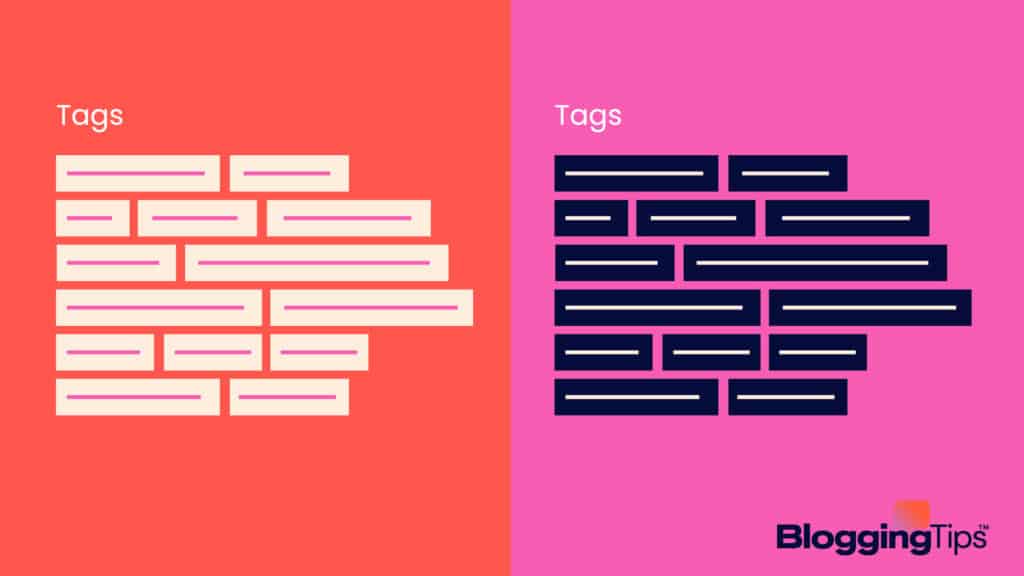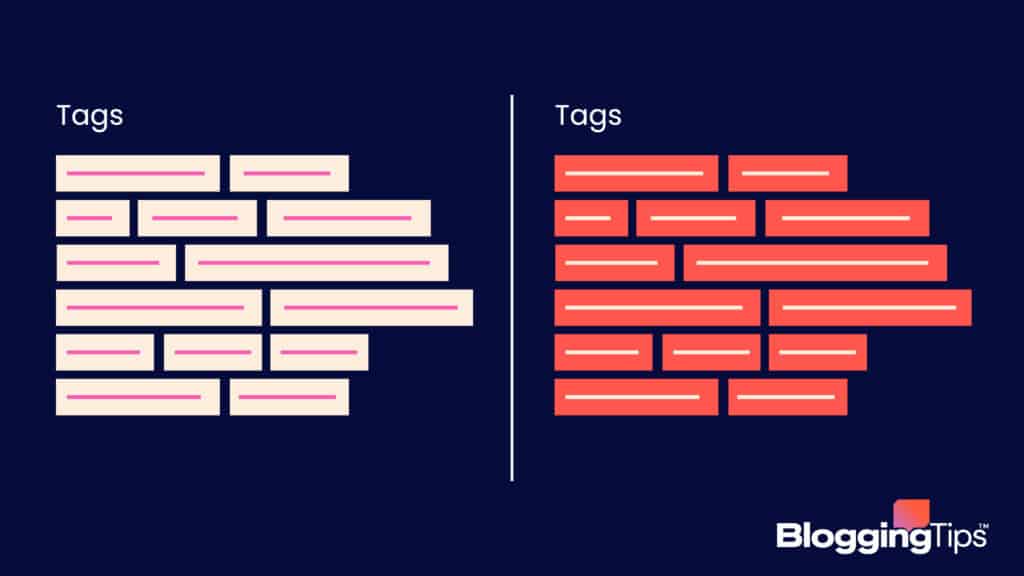As a blogger, I know how important tags are for reader engagement.
WordPress, a wonderful platform for bloggers, simplifies tags and has an easy-to-use native tag cloud widget.
WordPress plugins also give you greater control over how and where your tags and tag clouds display.
You may be curious about what a WordPress tag cloud looks like and how it works.
This article will explain tag clouds and creating one on your website.
We will also discuss the benefits of tag clouds and offer tips for optimizing them.
- What Is WordPress Tag Cloud?
- What’s the Advantage of Using a Tag Cloud Block?
- Why and When You Should Display Most Popular Tags in WordPress
- Where Should the Tag Cloud Be Placed?
- How to Create a Tag Cloud in WordPress
- How to Display a Tag Cloud Manually
- How To Display a Tag Cloud With a Plugin
- How To Use the WordPress Tag Cloud
- How To Limit a Tag Cloud in WordPress
- How To Add the Tag Cloud Block to Your Post or Page
- Best Tag Cloud Plugin WordPress
- Frequently Asked Questions
- Wrapping Up
What Is WordPress Tag Cloud?
WordPress tags can be used to describe keywords assigned to posts.
Site visitors find them useful in a few ways.
The tags associated with a post are displayed when someone reads it.
These tags can be found at the bottom or in a sidebar and visitor can view all posts associated with a tag by clicking on them.

Tags also make it easier for visitors to search through all topics on your blog.
A tag cloud is a list of all the tags you have defined on your website and can be used to help readers find topics they are interested in.
While tags are about engaging readers, they can also affect your SEO.
In the next sections, we will discuss what tags can do for your blog.
What’s the Advantage of Using a Tag Cloud Block?
Why would you want to use a WordPress tag cloud on your website?
A tag cloud is a great way to improve SEO, increase traffic or make it easier for your audience to find what you need on your website.
There are many advantages to having a WordPress tag cloud on your site, such as:
1. Use Tags To Boost SEO
As we have already mentioned, tags can improve your website’s SEO.
Tag your content with relevant keywords and topics to make it easier for search engine spiders to locate and rank your content.
WordPress tags will make it easier for visitors to navigate your website.
Consistent and descriptive tags will allow visitors to quickly scan your site and find the required information in just a few mouse clicks.
3. Tags Can Be Used To Create Visual Hierarchy
If your website has a lot of content, tags can help you create a visual hierarchy that allows visitors to scan the site and find what they want easily.
4. Use Tags To Arrange Similar Content
Tags can make it easier to organize related content on your site.
This can be particularly helpful if there is a large amount of content on your site or if you publish new posts regularly about the same topic.
Why and When You Should Display Most Popular Tags in WordPress

Tags make it easier to navigate your site and organize your content.
You should clearly label each post with tags.
These tags can be used to summarize the content of each post.
Like any feature, tags can be useful and not always necessary.
You might be wondering what to do with tags on your site.
First, you need to know that tags only apply to posts.
You can add tags on pages with some themes.
But others will not allow you to do so.
This is rarely something that people recommend.
You may consider tags unnecessary if your site doesn’t have many posts or you publish them only occasionally.
These tags are also unlikely to be required if your posts only contain news bulletins and company updates.
Tags are unnecessary if you have a personal blog that doesn’t attract a lot of traffic.
Tags are also very useful if your website relies on constant updates.
This is doubly true if your content tends to be on different topics.
We recommend that tags be added to your website and categories in these situations.
Where Should the Tag Cloud Be Placed?
You can place the tag cloud in a post on WordPress in several areas.
You can put your Tag at the beginning of your content, preferably in the first few paragraphs.
Most users also place tag clouds at the end of a page, while it is still okay to place them on your blog’s sidebar.
It will all depend on how you have set up your page and where you want the tag cloud to be displayed.
How to Create a Tag Cloud in WordPress
You need to take several steps to create your WordPress tag cloud.
These are:
1. Find the Most Important Topics and Keywords
Identifying the primary keywords and topics you wish your tags to reflect on creates an effective WordPress tag cloud is essential.
2. Select WordPress Theme or Plugin That is Compatible with Tag Clouds
Many WordPress themes and plugins allow you to create tag clouds.
Choose one that is simple to use and matches your site’s layout.
3. Add Tags to Your Content
After you’ve chosen a theme or plugin, you can add tags to your content.
Use descriptive and relevant keywords to tag your content so visitors can find what they are looking for.
4. Display WordPress Tag Cloud
After you have added tags and content to your website, you need to display the WordPress tag cloud.
You can do this by adding a widget in your sidebar or footer.
5. Monitor WordPress Tag Cloud
It is vital to keep an eye on your WordPress tag cloud.
Make sure the tags are accurate and relevant.
Your tag cloud should change with your website.
How to Display a Tag Cloud Manually
Insert the “wp_tag_cloud()” function wherever you want to display your tags, then set your parameters.
Below is a sample tag that includes some of the parameters.
Style Your Tag Clouds
CSS allows you to make your tags look more than just a list easily.
You will notice that this will alter the appearance of your sidebar widgets because of directly styling the “tag cloud”‘ div class.
Add a contained DIV to style them differently.
How To Display a Tag Cloud With a Plugin
The default WordPress widget, the tag cloud widget, is available for all themes.
Although the default widget is great, it has limited styling and setting options.
You might consider using a plugin to display your most-used tags with a more flexible appearance and functionality.
The cool tag cloud plugin is highly recommendable.
The plugin displays your tags in the same way as paper tags.
It also allows you to adjust the styling options to make them fit into your site.
You can blend in or stand apart.
The tag cloud widget will be available after you activate and install the plugin.
Next, configure the plugin.
Although this plugin offers many options, we will only focus on the most important.
We will start with the Title field.
Our widget will be named Popular Tags.
Next, there are styling options.
These options include font type, size, and weight.
But you can use these options to find the font and options that best suit your website.
Because this theme suits us better, we will change our image style to green.
Scroll down to see more styling options.
The Image alignment will remain on the left.
Select ‘Yes’ for animation on hover and ‘None’ for text transform.
We won’t exceed the maximum tag limit.
However, we will order tags according to the count.
This means the number of appearances and the Tag direction will be descending.
The Taxonomy area will remain at ‘Tags.’
We won’t touch it.
The Tooltip will remain on ‘Yes’ by default.
We will switch the Show Post Count to ‘Yes.’
We will not use any of the other options.
However, we will scroll all that way and then click ‘Save.’
Our footer now has a list of tags that look just like literal tags.
This includes the number and hovers animation.
You can also use the shortcode feature of this plugin.
Copy [cool_tag_cloud], and it will appear where you want.
How To Use the WordPress Tag Cloud
To add the tag cloud block click on the + block inserter icon.
Type “tag cloud” into the search box and click the button to add it to the page or post.
Use your keyboard to quickly add a tag cloud block to your page or post—type/Tag on a separate line and hit Enter.

How To Limit a Tag Cloud in WordPress
Suppose you’re using the tag cloud widget to show all the tags available on your WordPress website, and your site looks messy and cluttered due to too many tags.
In that case, you can limit the tags you want to display.
To limit the number of tags you have, use the methods below.
- Open your theme “functions.php” (Ensure that you are editing an activated theme file).
- Copy the provided code to your functions.php file
- Save the file.
How To Add the Tag Cloud Block to Your Post or Page
Click on Block Inserter and place the Block in the desired location.
You can also click the Block Inserter tool in the upper-left corner of your editor.
Click on ‘Tag Cloud’ to search and then select it.
Alternatively, type /tag cloud to enter the location where you want the Block.
‘Tag Cloud’ will display in the options.
The tag cloud clock is added to your content area.
All tags are automatically displayed.
You can choose from different sizes depending on how many tags you have.
The tags with the most posts will appear larger.
They are displayed alphabetically.
If you don’t have tags, the message will inform you there are no tags.
Clicking on a tag within the cloud brings up the archive page, which contains all the posts that used that Tag.
This function even works with drafts.
Be careful not to click the tags when using the tag cloud block.
Best Tag Cloud Plugin WordPress
WordPress has a number of plugins to make using tag clouds easier.
The best plugins for tag clouds on WordPress are:
1. 8 Degree Easy Tags Pro
8 Degree Easy Tags Pro, a premium WordPress plugin that generates and manages tag clouds.
It’s a fully responsive plugin that allows you to show off your tag cloud in the most attractive manner.
2. Categorized Tag Cloud
The WhileTrue team developed the Categorized Tag Cloud plugin for WordPress.
It generates a sidebar widget with the most popular tags on the website.
You can filter the words in the cloud by category to match your content better by removing unnecessary tag ids.
3. Extended Tags Widget
This advanced widget gives you complete control over the output for your tags.
The Tags widget is an alternative to the default WordPress tag cloud widget.
This version lets the user input all arguments typically found in the function wp_tag_cloud().
4. Tags All in One
Tags all-in-one is a widget and shortcode creator that lets you display tag clouds from post types in WordPress.
You can quickly determine the number of items displayed, the font size, and the display order with the shortcode generator and widget.
5. TagGator Pro
TagGator Pro plugin is a well-known plugin in the WordPress tagging category.
This plugin allows the creation of tags and their assignment based on keywords found in your content.
This plugin has an outstanding feature: auto-tagging.
With this plugin, you don’t even have to tag posts.
They can be automatically tagged when you create them.
6. Page Tag Cloud
This plugin allows you to add tags to pages just like you can to posts.
This plugin adds a widget to display page tags.
7. Simple Tags
The most secure plugin among WordPress tagging plugins is Simple Tags.
This plugin was developed using the latest WordPress version.
It includes all of the necessary functionalities.
This plugin allows you to tag pages and includes them in the tag results.
Frequently Asked Questions
If you still have questions about WordPress tag clouds, check out the frequent queries below.
Tag clouds provide a fascinating approach to site navigation.
Even though it’s sometimes referred to as an “alternative,” it doesn’t replace it.
Instead, it supports it by providing additional clues about site content.
Can the tag cloud block be transformed into another block?
You can transform the tag cloud block by clicking on the Transform link.
It will be converted into a Categories List or Columns.
Wrapping Up
If you’re a WordPress user and want to improve reader engagement, WordPress tags and tag clouds are a must.
With this guide, you’ll be able to create a tag cloud in no time.
And with the plugins mentioned above, you can manage and stylize your tag clouds with ease.
If you have any questions about using WordPress tag clouds, leave them in the comment section.
Tags are an essential part of any successful blog.
WordPress tag clouds improve SEO, make navigation easier, and increase traffic to your posts.






